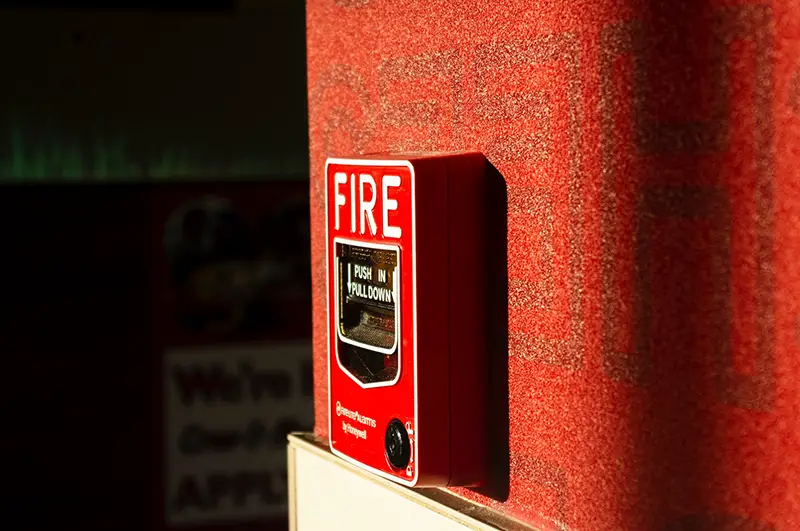Click here to get this post in PDF
The fire code outlines fire alarms need to be inspected and tested. You will want to have your alarms inspected regularly based on these requirements. The inspector will look for tamper switches, Flow switches, and back-up batteries, among others. The inspection is scheduled to ensure that they are operating correctly. It’s easy to maintain an inspection schedule by utilizing dependable fire inspector software.
NFPA Standards
Fire alarm systems need periodic inspections and tests to ensure they function correctly. The requirements start at the installation time and continue at specified intervals for the system’s life. The NFPA standards for fire alarm testing require notification of all relevant parties, including occupants, visitors, staff, and patients. The tIn addition, the procedure must include trouble signals to verify that the fire alarm system is functioning correctly.
First, the system should include an automatic detector. Automatic detectors are required on control units, notification appliances, circuit power extenders, and supervising station transmitting equipment. However, the next edition of NFPA 72 will allow the removal of detectors with risk analysis and AHJ approval. If the sensors are not functioning, a fire alarm system owner must remove them and mark them as not in service.
Flow switches
A proper fire alarm maintenance plan includes testing Flow switches for six months each year. Flow switches are devices that detect water movement within a piping system. When triggered, they activate the fire alarm system and send trouble signals to the control panel. For example, in some systems, the tamper switch detects closed sprinkler valves. A fire alarm maintenance contractor tests tamper switches, flow switches, and pull stations.
Flow switches are electromechanical devices that monitor water flow within a building’s fire sprinkler system. The alarm will trigger an automatic water sprinkler system if the flow is continuous. The fire department will respond. If the fire department cannot reply to the call, a leaky system has occurred. Flow switches should be tested and repaired if they fail to operate correctly. To determine whether a flow switch malfunctions, check the wiring and try them.
Tamper switches
Tamper switches in fire protection systems are essential for a few reasons. First, if someone tampers with them, they can make the system ineffective and render the fire alarm useless. Tamper switches are mechanical or electrical devices that act as warnings if a valve is closed or tampered with. They contain an actuating unit (typically a cable or lever) and an indicator that indicates if a malfunction has occurred.
In older fire alarm panels, the supervisory signal may not latch properly. This may be due to common trouble. In this case, it is necessary to set up a shared zone between the isolation valve and the alarm switch to ensure that the alarm will override the trouble condition. Once the switch is closed to indicate trouble, it must be tested again to confirm that it is still working correctly. In addition, it is essential to clean all input devices and duct detectors.
Back up batteries
During a fire alarm inspection and test, the technician will check the back-up batteries in notification appliances. Next, he will activate manual fire alarms and confirm horn strobes are lit. Finally, he will document the time it takes for the fire department to receive a signal from the fire alarm system.
Back-up batteries should be replaced at least every five years or when they reach fifty percent capacity. Below fifty percent capacity, there is a high risk of failure. A fire alarm battery should be replaced at least once every five years or more often if used regularly. It should be dated and labeled, and the authority having jurisdiction may require more frequent testing. It is also essential to check for any signs of aging or damage.
Timeframe
Fire alarm inspection and testing are crucial parts of maintaining NFPA compliance. Fire safety technicians perform visual and functional tests to ensure that the system is in working order. Fire alarm inspections are typically scheduled according to NFPA Standards, and different states refer to varying versions of these standards. In addition to vision testing, fire safety technicians annually test the functioning of remote annunciators, fire alarm control panels, and alarm communication equipment.
The recommended fire alarm inspection and testing timeframe are based on the NFPA Standard. Fire inspectors should follow a checklist to ensure all components are in good condition. The frequency of fire alarm inspections and tests varies according to the facility. Fire alarms detect many hazards, including active shooters.
NFPA Standard guide to fire alarm inspection and test
NFPA 72 is a comprehensive guide that lays out the specific requirements for the visual inspection and testing of fire alarm systems. It also covers particular smoke detector and sensitivity test requirements and how to install initiating devices properly. In addition, it provides insight into standard test methods that may not be in accordance with Code requirements. The guide is intended for anyone involved in the maintenance or installation of fire alarm systems. These may include electrical contractors, building designers, auditors, and project managers.
The NFPA Standard guide to fire alarm inspections and tests covers all aspects of fire alarm maintenance, inspection, and testing. This code also specifies the roles and responsibilities of personnel who carry out the tests and inspections. Fire alarms are critical safety equipment and must be inspected and tested regularly to ensure that they are operating correctly.
You may also like: 12 Workplace Fire Safety Tips
Image source: Unsplash.com

